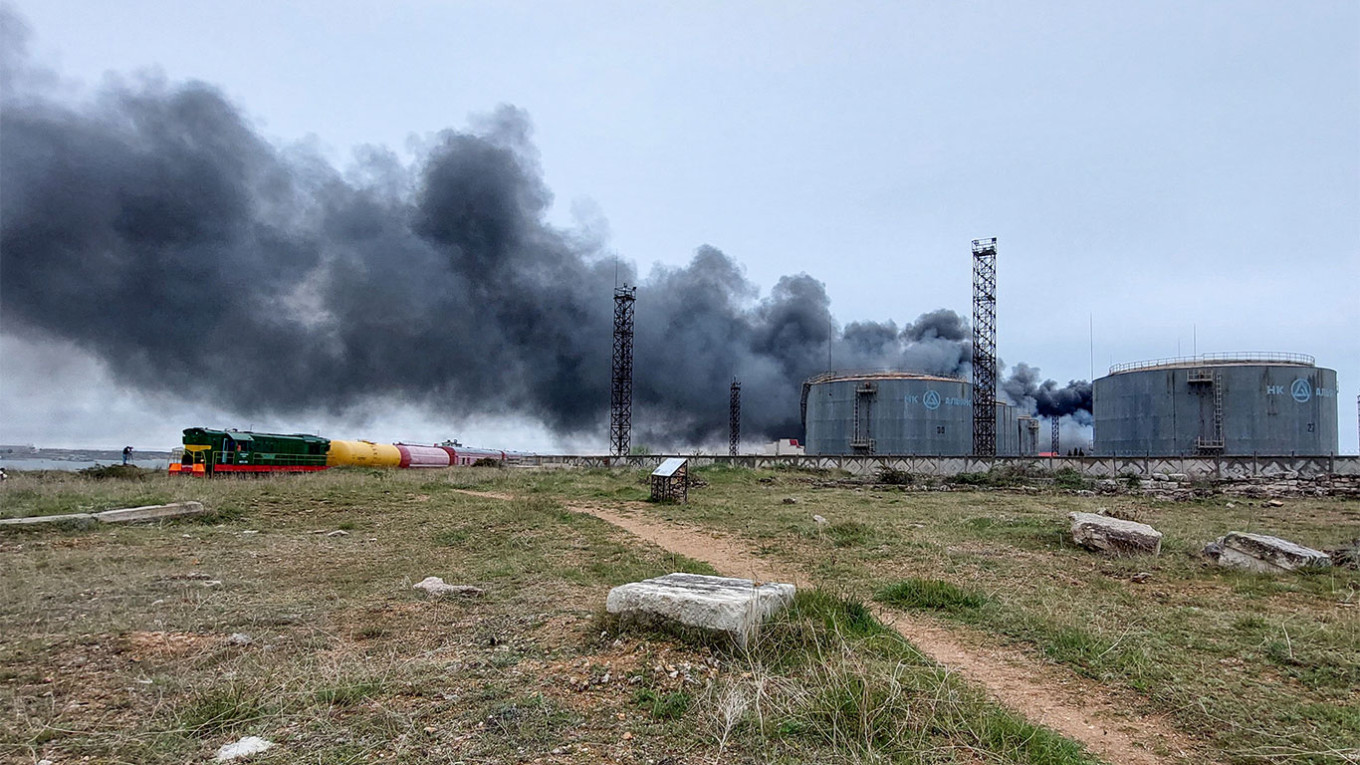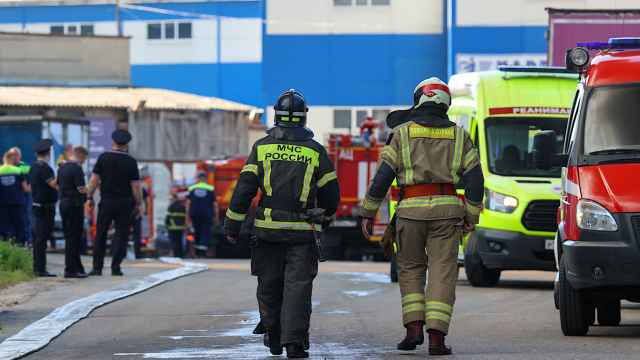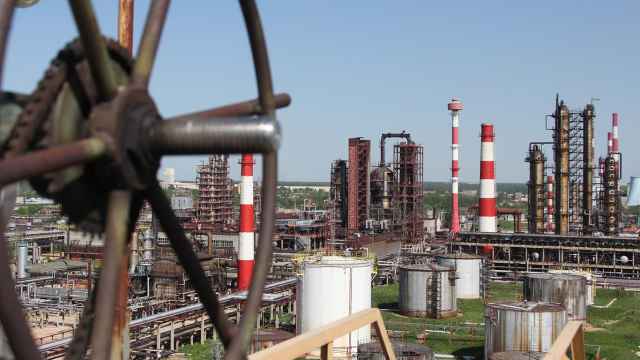When an oil depot in Russian-annexed Crimea was attacked in late April, the resulting fire sent a plume of thick black smoke into the sky.
The incident at the facility in Sevastopol was one of at least five attacks on oil infrastructure in southern Russia in less than two weeks. There was also a double attack on the Ilsky oil refinery in the Krasnodar region, a strike on an oil refinery in the Rostov region, a reported attack Wednesday on the Druzhba oil pipeline carrying Russian crude to Eastern Europe and an attack on an oil storage facility Thursday in Russia’s Bryansk region.
Attacks on energy infrastructure in both countries have been a common tactic since Russia’s full-scale invasion of Ukraine last year.
But the string of recent oil facility strikes, if Ukraine is confirmed to be behind them, were likely designed to aid Kyiv’s long-expected counteroffensive by creating logistical problems for the Russian Armed Forces and puncturing a sense of security felt by Russians far from the frontlines, experts told The Moscow Times.
“Every military action that is conducted by Ukraine matters and is part of the counteroffensive logic,” said Dionis Cenusa, an expert at Lithuania’s Eastern Europe Studies Center.
While Ukraine follows a policy of neither confirming nor denying its role in attacks on Russian territory, Ukrainian officials have publicly condoned some of the oil facility strikes.
After the oil depot fire in Crimea, for instance, a spokesman for Ukrainian military intelligence, Andriy Yusov, said the attacks were “God’s punishment” for the killing of civilians in Ukraine.
The Ukrainian Defense Ministry did not respond to emailed questions on whether it was behind the incidents in annexed Crimea and Russia’s Krasnodar region.
Crude oil is a crucial resource in wartime, fueling military vehicles and helping to keep the economy functioning. Its value has made oil facilities a top target for both Kyiv and Moscow as they seek to degrade the other side’s capabilities.
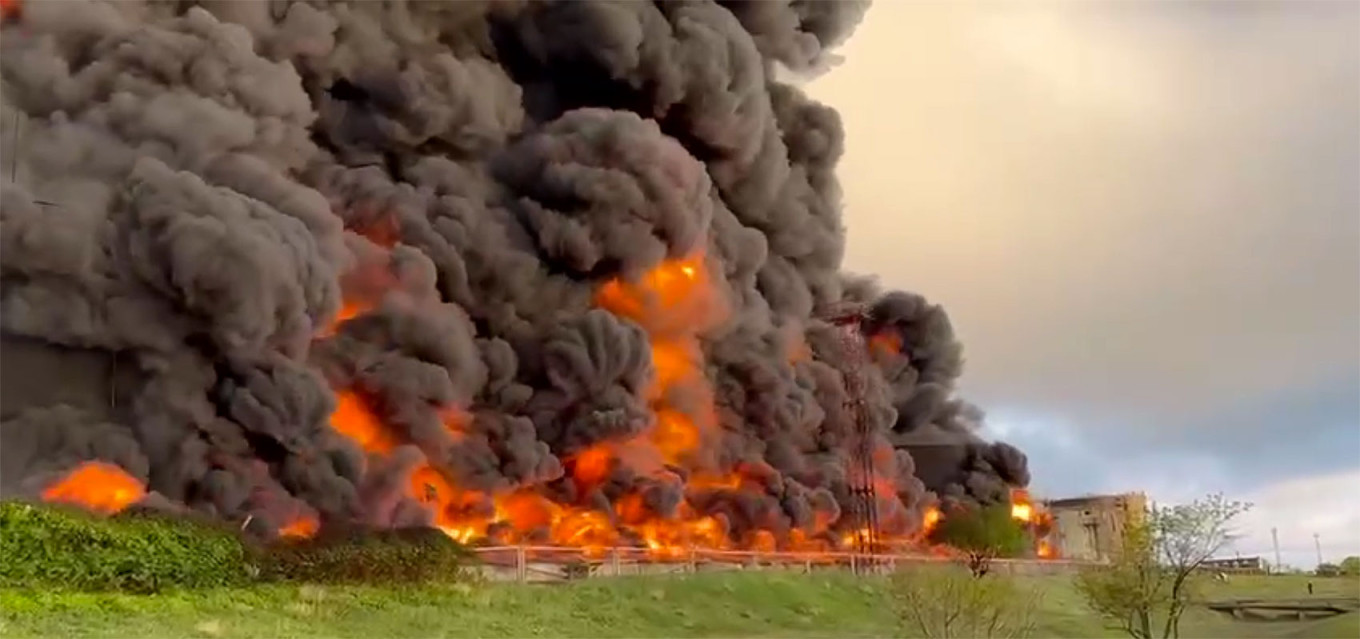
In Russia, it’s transported — usually through pipelines — to regions bordering Ukraine from as far away as oil fields in western Siberia and the Arctic Ocean.
Yusov said that the attack in Crimea destroyed 10 oil tanks with an approximate capacity of 40,000 tons, but the size of Russia’s oil reserves and its significant storage capacity make measuring the immediate impact difficult.
After the attack, the Russian-appointed governor of the Crimean city of Sevastopol, Mikhail Razvozhayev, wrote on Telegram that the local fuel supply would not be affected.
While there are few details about how exactly the strikes on Russia’s oil facilities unfolded, Russian officials have blamed Ukrainian drones.
Governor Razvozhayev said that the facility in Crimea was attacked by two drones, one of which was shot down before it could reach its target. Local officials in the Krasnodar and Rostov regions also pointed the finger at drones.
Footage published online showed what appeared to several drones traveling through the sky before falling on the Ilsky oil refinery on consecutive nights last week.
Unmanned aerial vehicles have played a key role for both the Russian and Ukrainian armies during the fighting in Ukraine, and Kyiv is known to be looking to increase its drones’ range and carrying capacity.
According to Wim Zwijnenburg, a researcher who has studied wartime attacks on energy infrastructure, the increasing sophistication of Ukraine’s drones is likely playing a role in the uptick of these kinds of attacks on oil facilities.
“I think that it’s more linked with Ukraine developing their own long-range, small type of drones with explosives that are able to penetrate Russian air defenses because they're able to fly low and be undetected,” Zwijnenburg said.
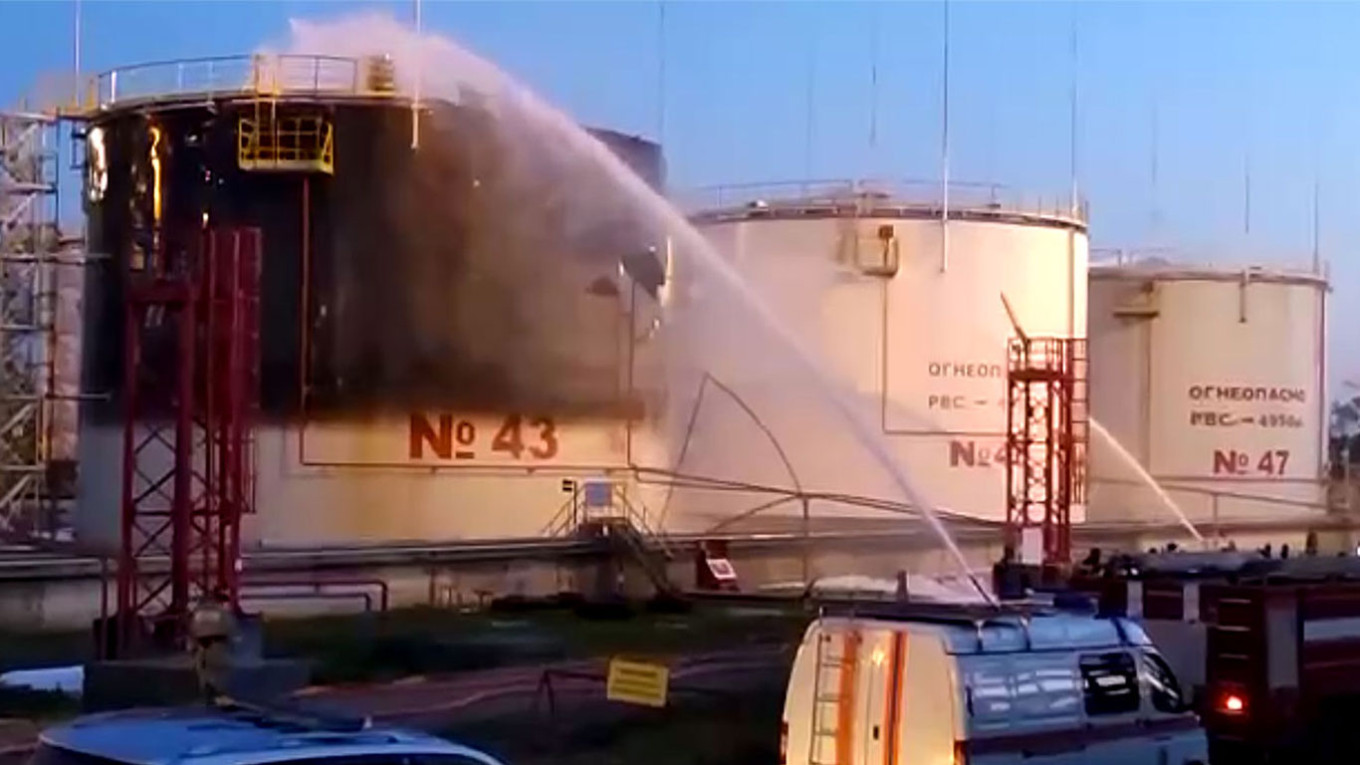
“Or they’re being launched locally by infiltration groups.”
Throughout the fall and winter, Russia made attacks on Ukrainian energy infrastructure a key part of its war strategy — targeting power plants, transmission lines and fuel facilities across the country with long-range missiles and drones.
In just one such barrage in October, Russia damaged 40% of Ukraine’s electricity generation and transmission facilities, according to a report that Zwijnenburg co-authored from PAX, a Dutch organization that researches conflict zones. This led to nationwide blackouts and left millions of Ukrainians without heating, electricity and water.
If Ukrainian military commanders were behind the recent attacks on Russia’s oil infrastructure, however, they are unlikely to be seeking to replicate the Kremlin's tactics which caused widespread suffering among Ukrainian civilians.
Instead, they are likely focused on disrupting Russian supply chains and logistics ahead of a counteroffensive, experts said.
It’s widely believed that Ukraine will attack Russian forces in the south of the country, close to the regions where these facilities were struck.
“If you are attacking the logistics of war efforts, you might impair the military readiness of forces that are near the front,” Wojciech Jakóbik, an energy analyst based in Poland, told The Moscow Times.
That said, the strategic impact of these attacks is not always easy to measure and their scale — at least so far — is likely too small to cause the Russian Armed Forces any serious problems.
Isolated attacks like these do not tend to send any ripples up Russia’s energy supply chain, according to Elina Ribakova, an expert at the Peterson Institute for International Economics.
At the same time, some believe the aim of the attacks was less about causing damage to Russian logistics, and more about sowing fear among Russian soldiers and the wider population.
In addition to the attacks on oil facilities, recent weeks have also seen explosions on Russian railroads, strikes on military facilities inside Russia and even a drone strike on the Kremlin in central Moscow.
“I think there's also an ability to project force on Russia, to show we can also hit you there,” said researcher Zwijnenburg.
“To show we have the capabilities and and we will do what’s necessary to take out any fuel supplies that's needed for your troops.”
A Message from The Moscow Times:
Dear readers,
We are facing unprecedented challenges. Russia's Prosecutor General's Office has designated The Moscow Times as an "undesirable" organization, criminalizing our work and putting our staff at risk of prosecution. This follows our earlier unjust labeling as a "foreign agent."
These actions are direct attempts to silence independent journalism in Russia. The authorities claim our work "discredits the decisions of the Russian leadership." We see things differently: we strive to provide accurate, unbiased reporting on Russia.
We, the journalists of The Moscow Times, refuse to be silenced. But to continue our work, we need your help.
Your support, no matter how small, makes a world of difference. If you can, please support us monthly starting from just $2. It's quick to set up, and every contribution makes a significant impact.
By supporting The Moscow Times, you're defending open, independent journalism in the face of repression. Thank you for standing with us.
Remind me later.



